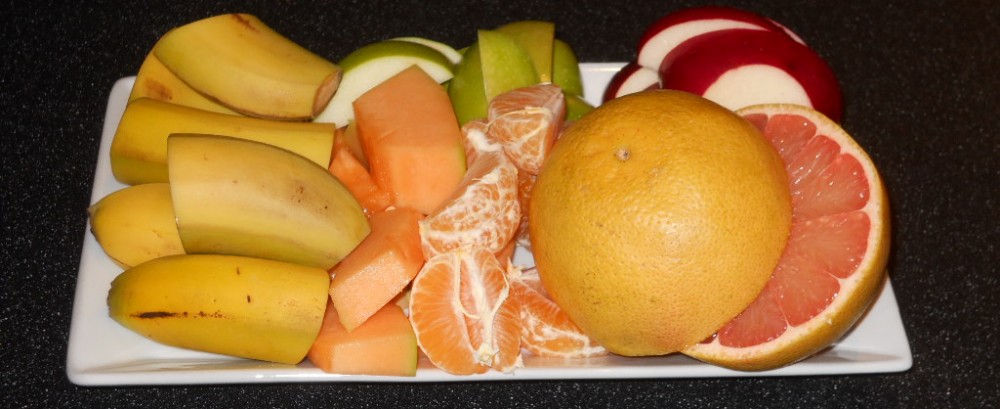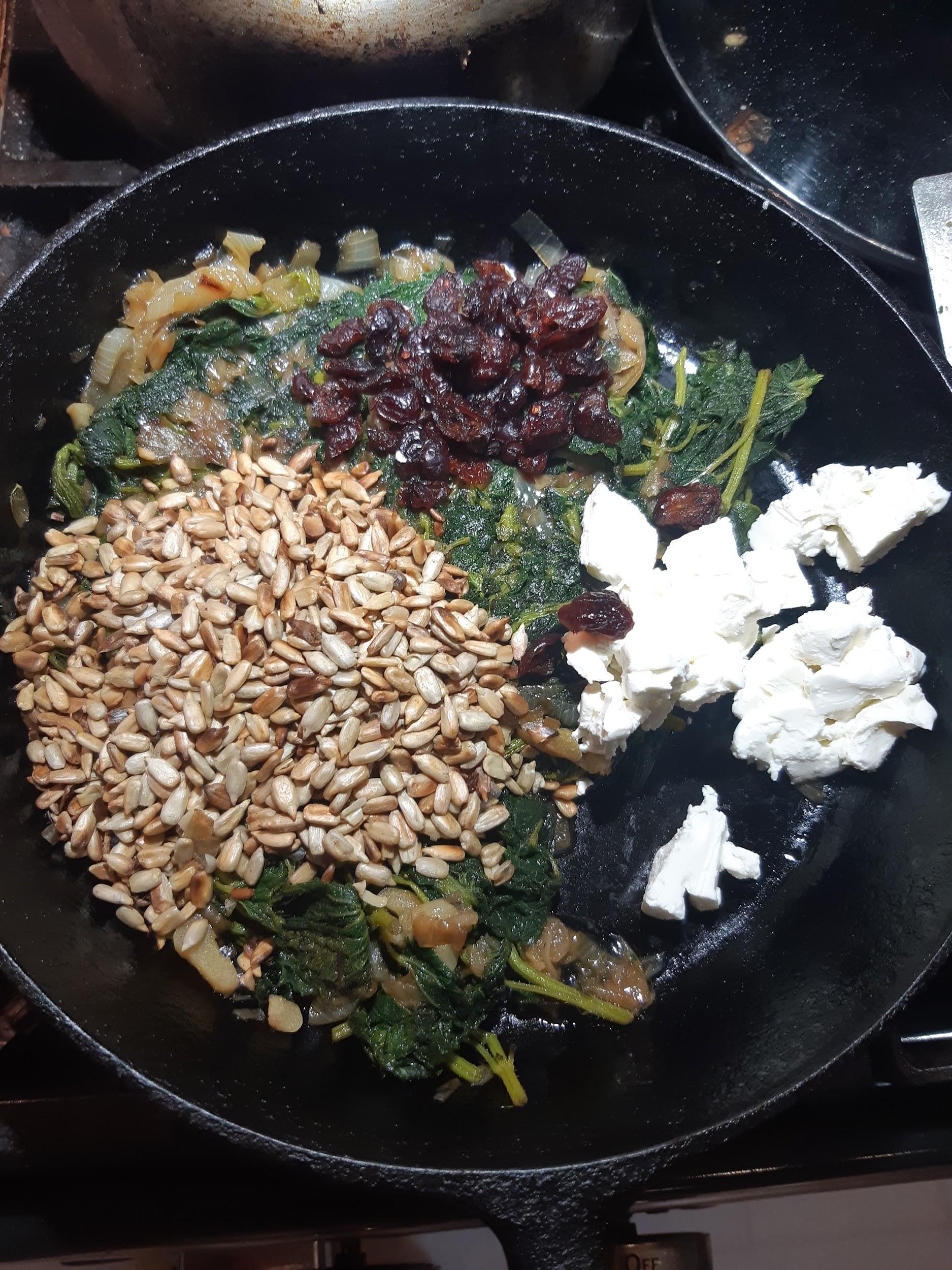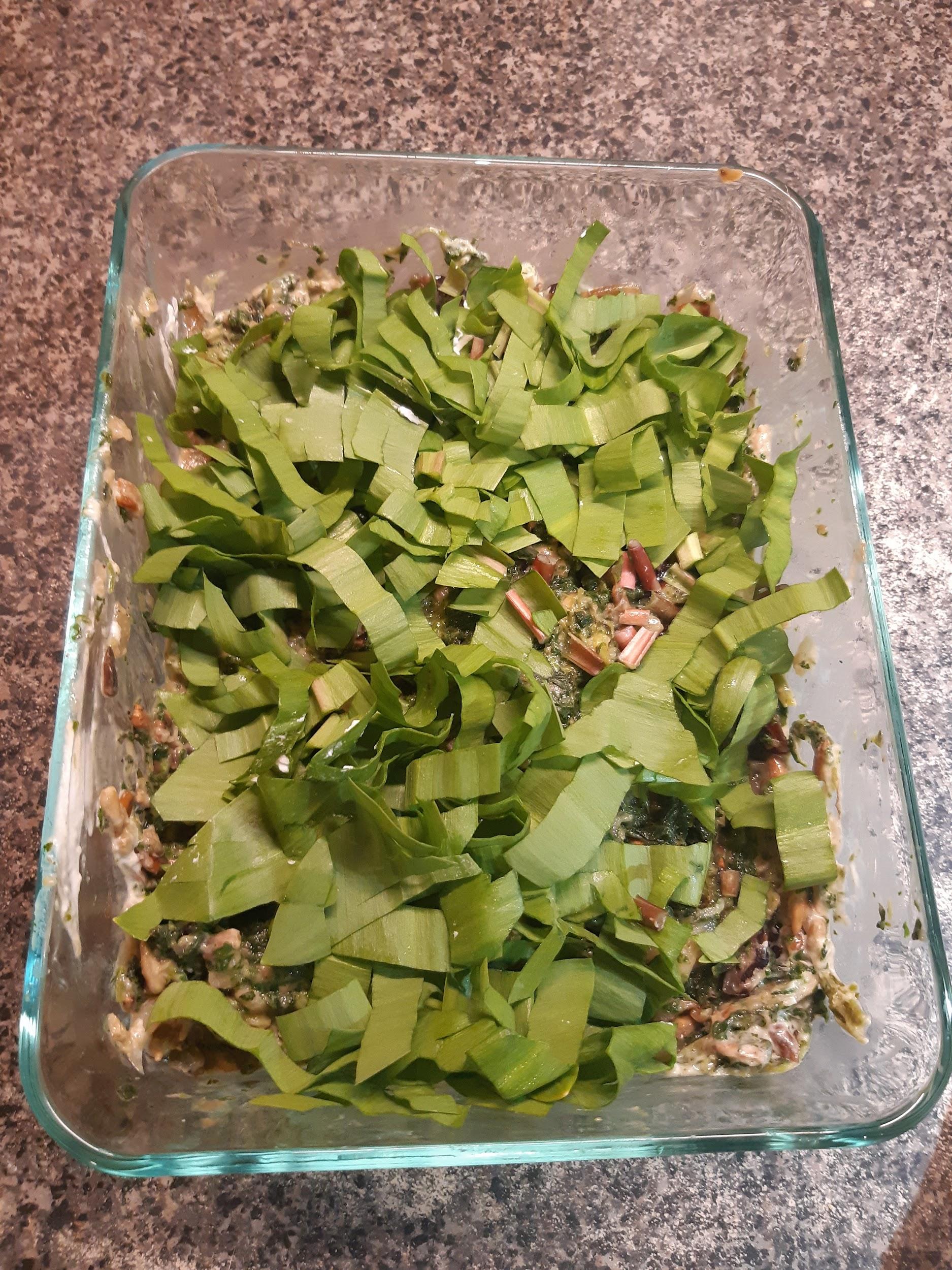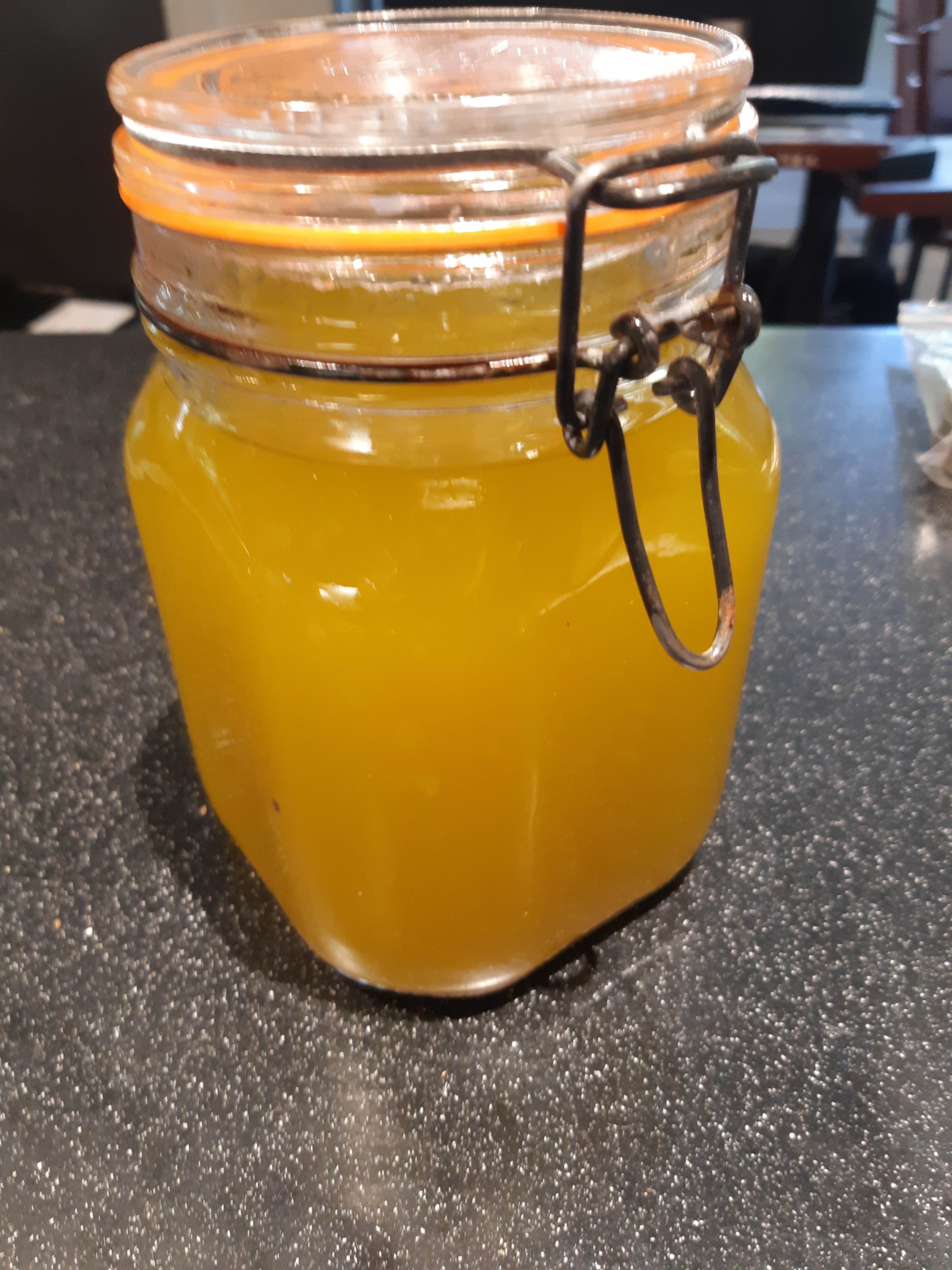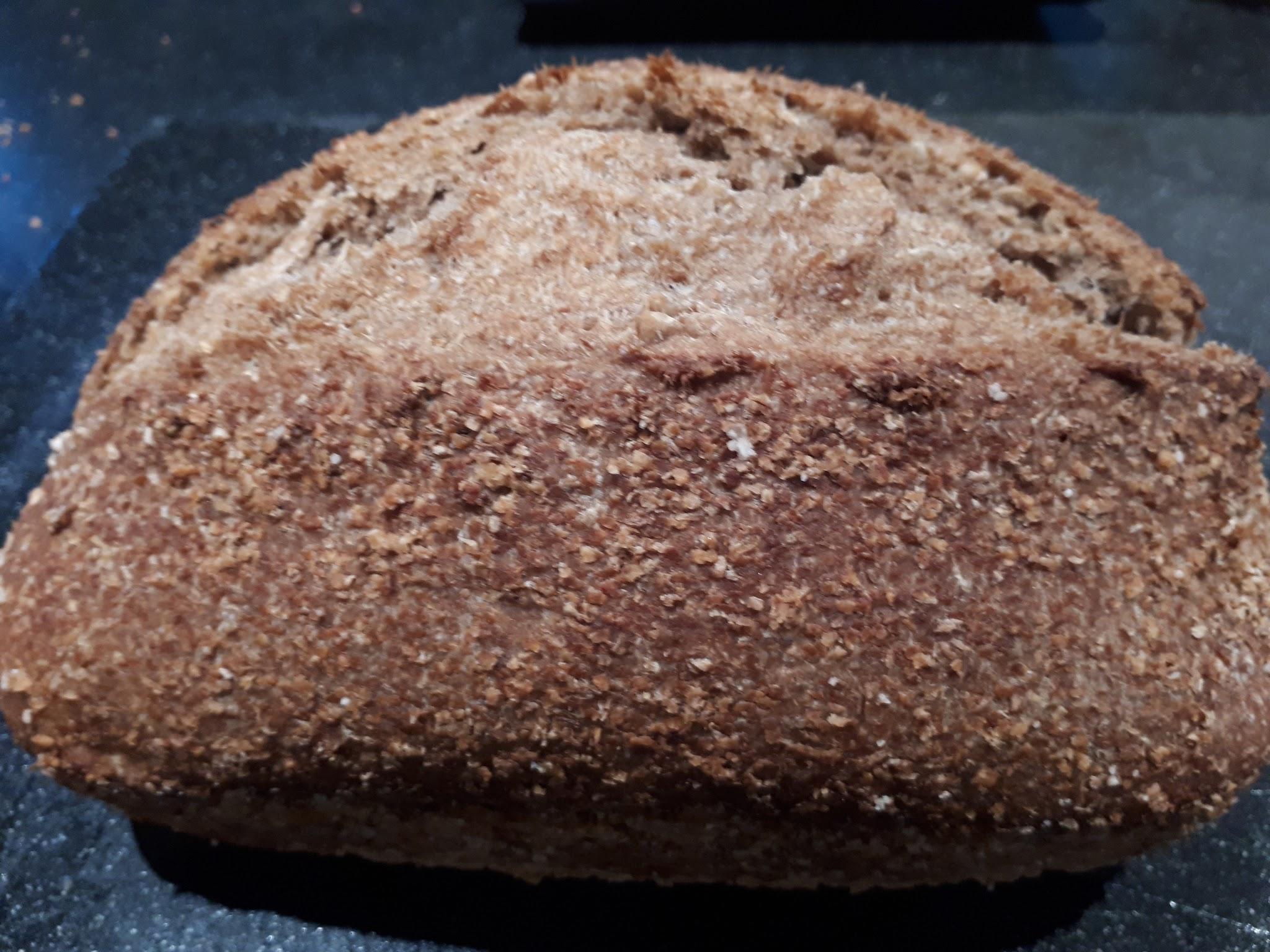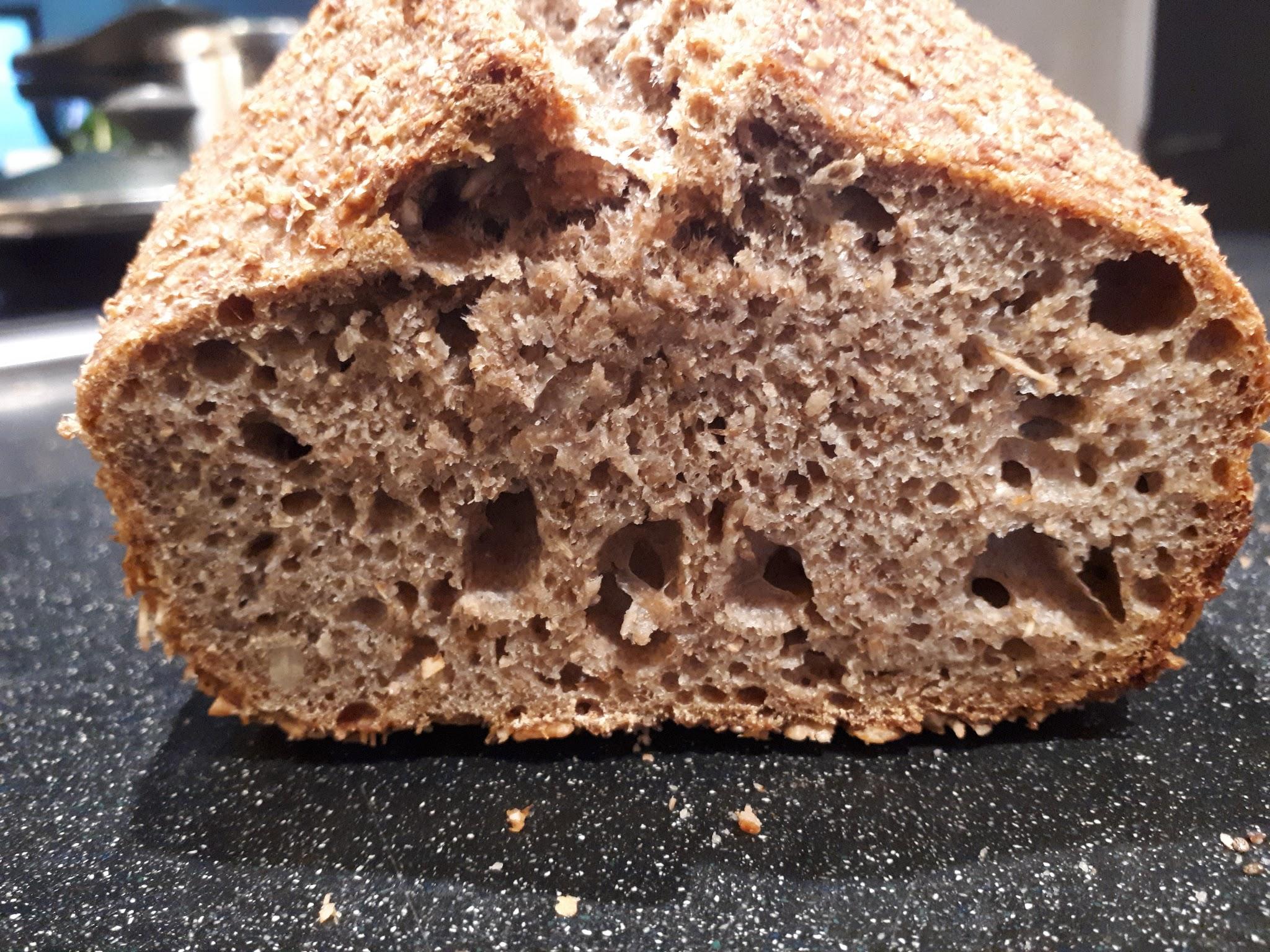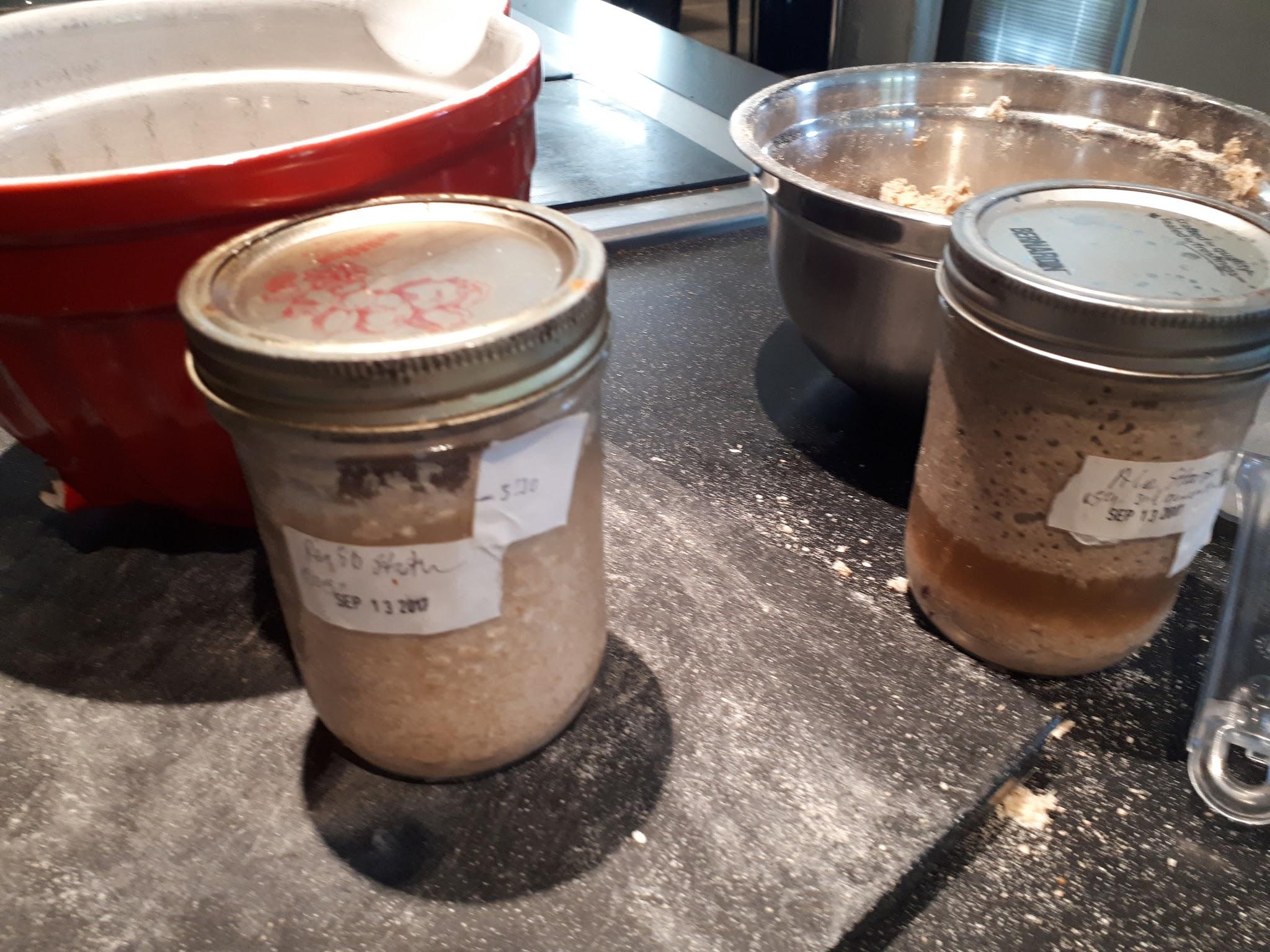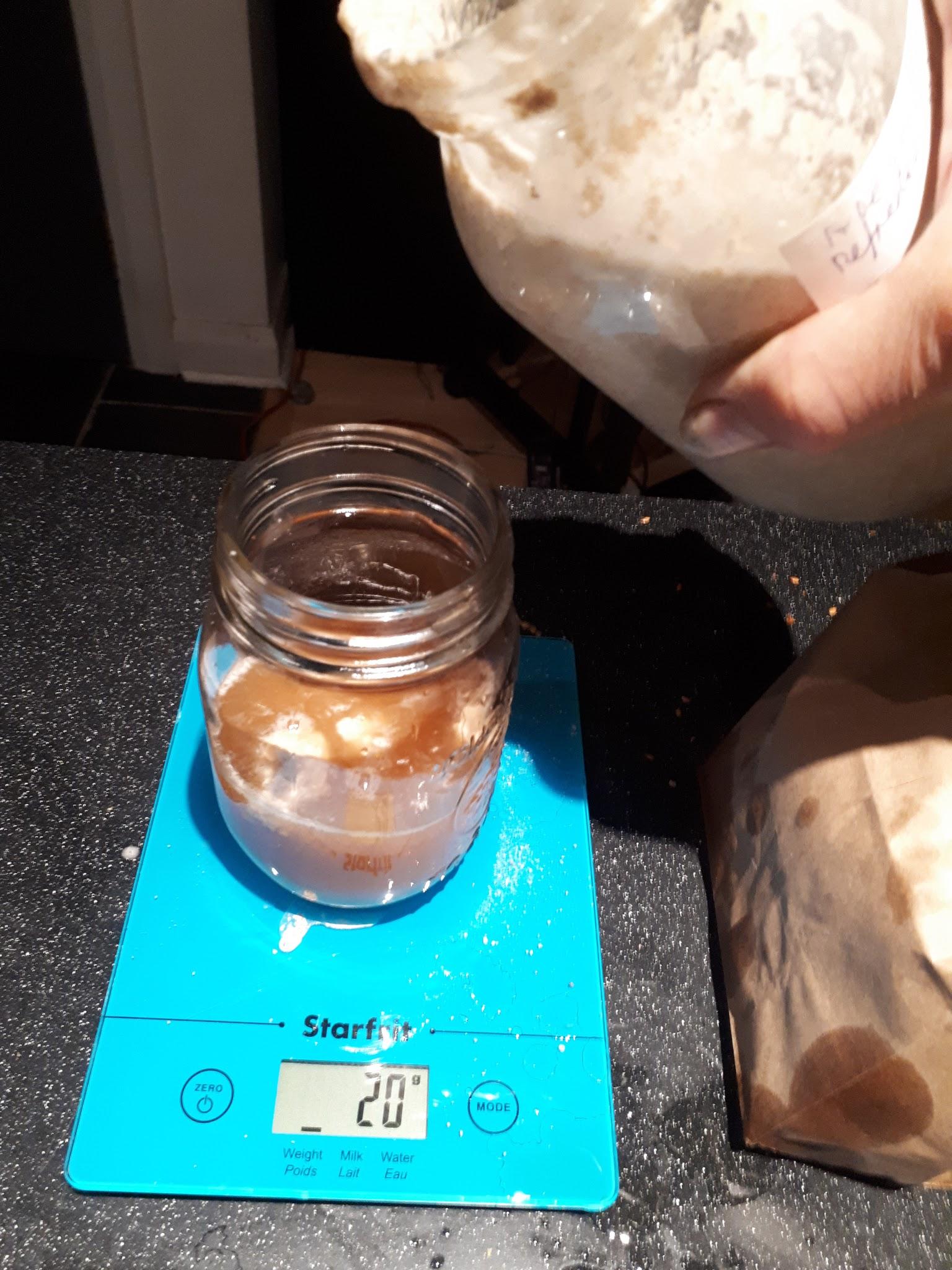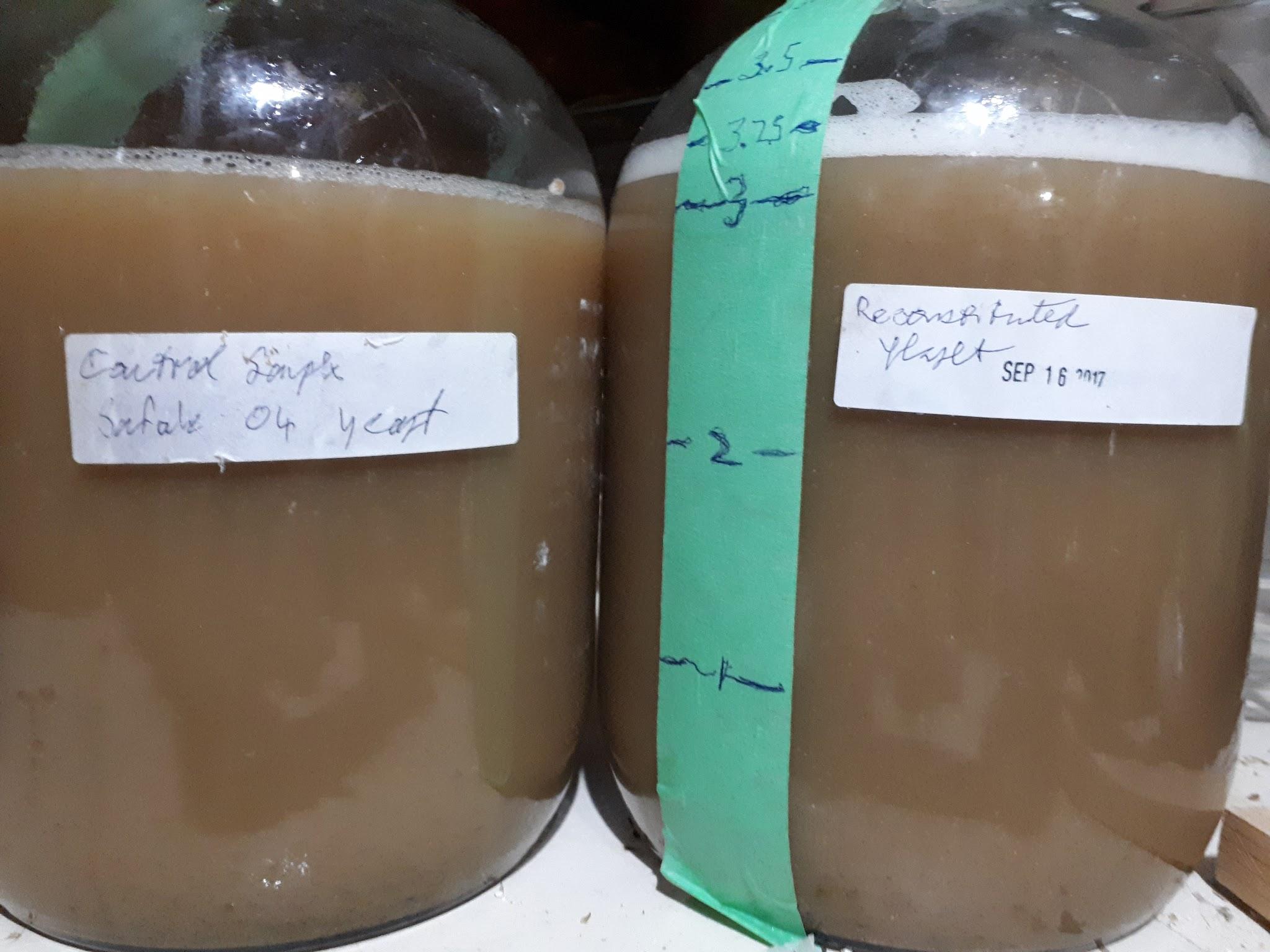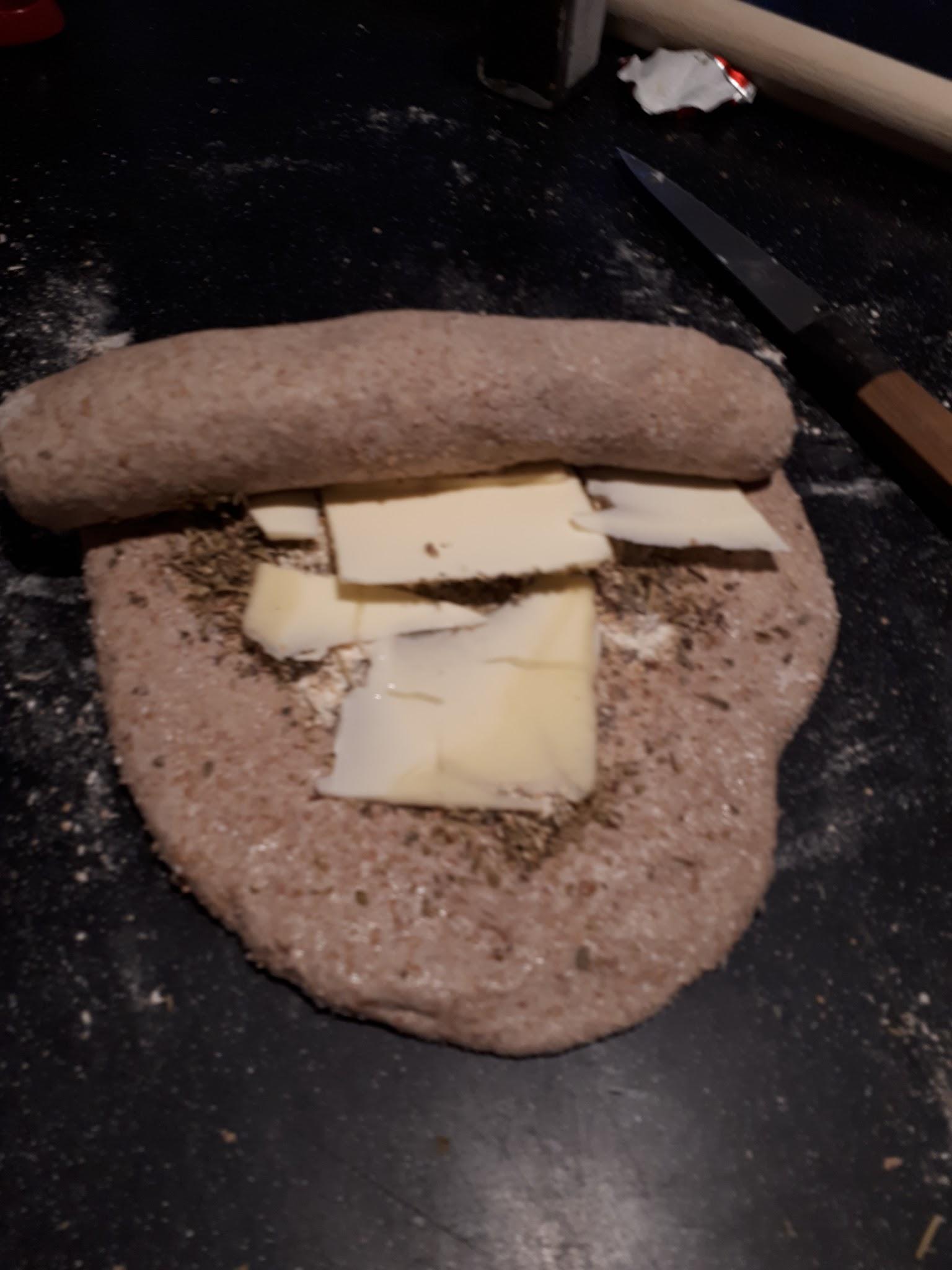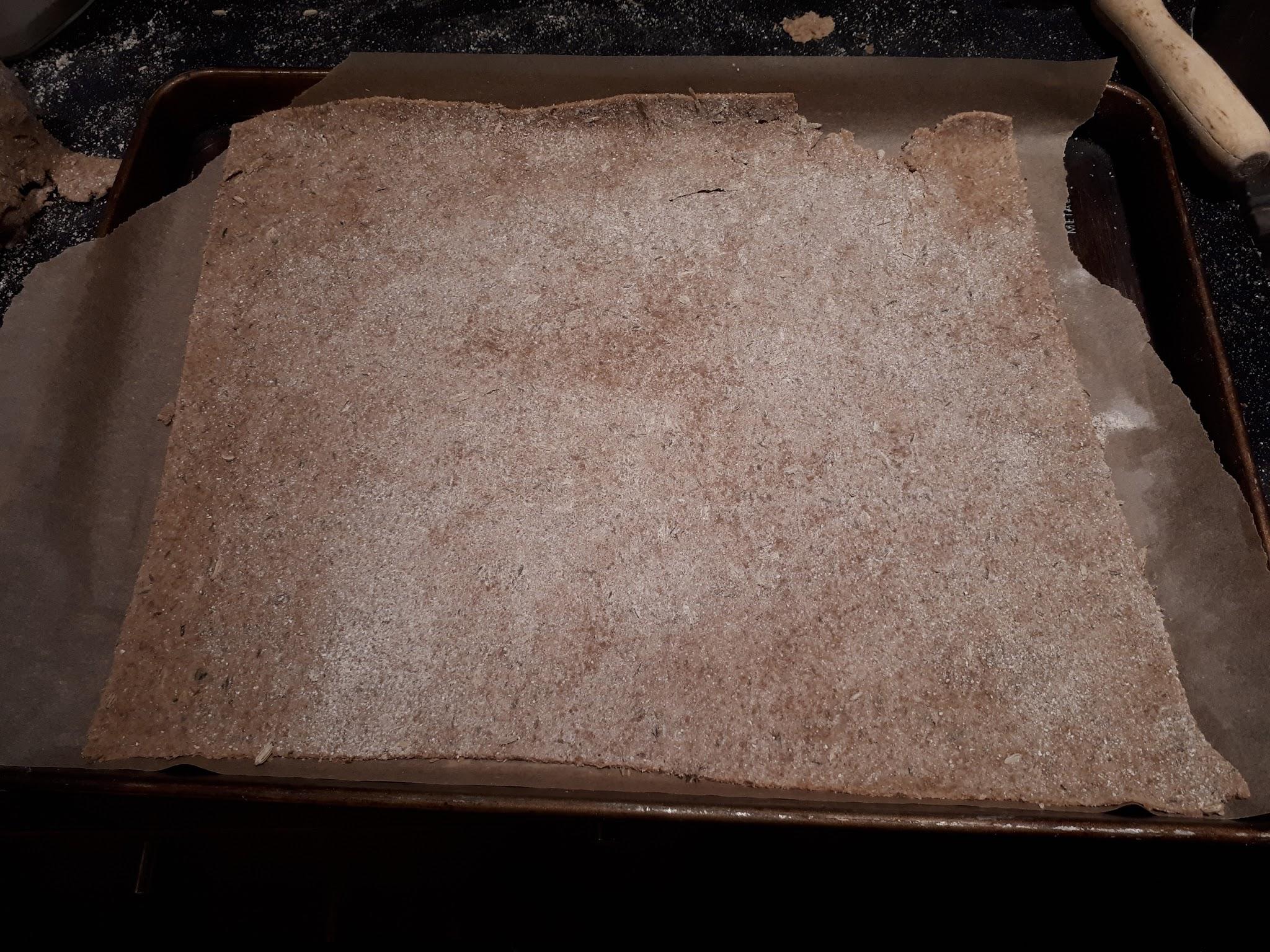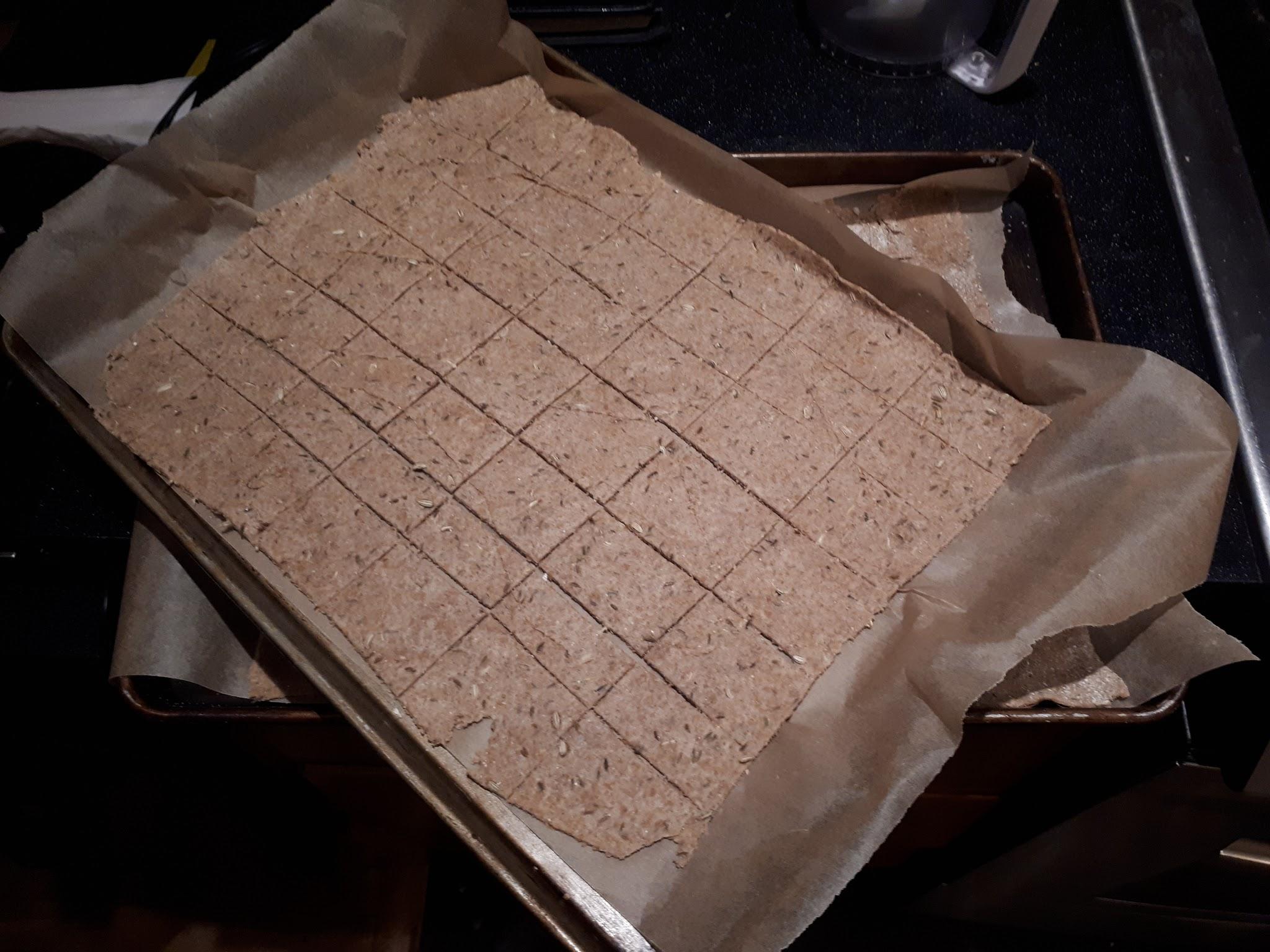Sept 10
This blog is going to be a process blog where I don’t know quite where it will end up. I’m also going to try to do this entirely on my phone.
Here’s the story. On the last weekend in September, I will be going on a backwoods canoe trip facilitated by my very experienced son. It’s the first time for me and likely the last as my various commitments sadly tie me down. Needless to say I’m really looking forward to it.
Yesterday at breakfast I had run out of bread and had only a sourdough bulk rise ready to be made into a loaf. About 4 hours away. (Proofing baking& cooling). I tore a couple of small chunks from the bulk rise, flattened them out, put a little oil in a frying pan and a couple of minutes later, fresh delicious sourdough hotcake. My son had one too and wondered about the potential for doing this for our trip. I said ‘sure, easy’ and showed him my lump of dough. He said “Too heavy like this. Can you do it so we only bring the flour? ” I said I would work on it.
I posed the question on a couple of Facebook forums. While there was interest, no one (so far) had tried what I am trying to do though a couple noted that this is what Klondike miners must have done so many years ago.
My vision is to get a low hydration starter going – something that can stay in a ball. At supper I would take half of it mix it with just enough flour water and salt for an overnight bulk rise; add a little flour and water to keep the starter going. Next morning flatten out the dough into buns and fry on the stove. If there are large flat rocks I could use them.
I’m about to try it all at home first – beginning with the starter. So for 100g of starter at 166% I need 104g of flour to make it 65%. (try my hydration change calculator) This should yield 200g of 65% starter.
Best internet discussion I’ve found so far… https://backpackinglight.com/forums/topic/87645/
And I’ll keep adding to the blog as this experiment develops.
Sept 11
Last night I prepared my initial stiff starter. (I am of course in my house experimenting with nothing on the line.) This morning I peeled off half of it, (100g) added a pinch of salt, flattened it with my hands only and put it on a hot skillet. The remainder of the starter is back in its jar, room temperature, to be refreshed tonight.

Hotcake in dry skillet

The dough barely rose and felt stiff. Clearly a lot of work to do.
Little rise. Sadly its not like the result from my big bag of dough in the fridge. Taste is ok but then again its hot. That’s the idea though- to eat it right away. I have to double check my formula as the dough felt a lot stiffer than 65%.

The crumb shot as such.
So…. a little later in the morning I decided that if I liked the dough I had in the fridge then I should use it as a starter base. So: 50g dough (1g salt) 100g flour and 65g water. This is how it starts:

The new starter dough

Experiments like this lead to strange places. This is a “french toast fritter pancake”. Instead of soaking a bread slice in egg, egg is kneaded into raw bread dough then fried in a really light coating of oil. Next time I should let it settle / rise for a bit. I’d definitely try it again.
September 12
All is working as it should. Last evening I mixed more flour and water into my starter (66%) and this morning tore off a chunk of it, added a pinch of salt and cooked it dry on the stove top. My son’s analysis: “it does the job”.
Next task: scale it up so it can feed 3, but keeping the same amount of starter. What I like so far is that it’s flexible and quite predictable. The caution: get your heat right. Less better.

.Sept 13
First a shout out to Bud who seems to be the only FB reader to truly get what I’m doing. Thanks for all your advice!
On my jog yesterday I figured out my weight proportions: there are 3 of us which at 100g per person suggests a dough of 300g plus 100g starter. 200g flour + 130g water gives a 65% hydration dough and a little more than enough per person. This dough is set up the night before and in the morning split 4 ways. 1 put back in the bag and 3 get a pinch of salt added and are cooked. How much easier could this truly be? Next task: figure these quantities as volumes and not weights. Also give it a final test run.
Sept 15
I tried my first effort with the volume needed for our trip. I made 3 different sizes/thicknesses. Essentially if one is doing a thick bun it needs to proof just like a loaf of bread. Thin buns are a lot more forgiving.

The 3 bun shapes tried.
The thickest one definitely needed proofing!

Sept 29
We leave tomorrow. I’ve been given interesting challenges here: pancakes and naan. Both feature oil or butter in the mix.
Here’s how the pancakes could work: a zip lock big bag with the following little bags within: 100g dough and 9g skim milk powder; a second with 100g flour; a third with 1g flour, 7g sugar, 2g salt, 7g baking powder.
Night before: mix dough and flour with almost a cup of water and gently mix until everything is evenly hydrated. Next morning add the third bag, and some oil. mix gently leave for 30 minutes. Batter should be ready.
Camping notes
September 29
The starter dough
I put up one of my big 2.8kg basic doughs. Some of this went into a loaf for the wonderful person taking care of things while we are away. From this dough I took off 2 pieces of hundred grams and put them in 2 large ziplock bags. I also made up of three other Ziploc bags each with 200 grams of whole wheat flour in 4 grams of salt. These would be the hot cakes to be made on the trip.
Panini sandwiches
Panini sandwiches for the first day lunch had been prepared the day before and day of our trip. I took the remaining eight to nine hundred grams of my older bulk dough from the fridge, rolled it out and laid on slices of butter as one would do for a croissant: It was folded and rolled out several times to make a laminated dough. The final roll was approximately one quarter to three eighths inch thick. It was then cut into rectangles about 4” wide and left them to proof for about an hour. While they were proofing, I prepared the Panini fillings: BBQ vegetables, cold meats, pickles, brie and cheddar slices. These all went into a couple of bags for assembly early the next morning.
I BBQ’d them on a medium heat about 1-2 minutes per side until they browned and expanded.
September 30th – we depart
Paninis
These were made for lunch on the first day.
Before we left I did the final prep. The paninis were thick enough that they could hold together well enough to be slit open easily and filled without breaking up and without breaking the hinge at the back of side of the bread. The butter laminate and grilling method ensured that the outside would stay together and so be fully functional as a sandwich. The completed sandwiches were wrapped liberally in wax paper and labeled. (This is important for later on).
We arrived at our departure point about 12:00PM. We wanted to get going and weren’t hungry. We left the outfitters in a rented 3 person canoe around 1 o’clock and by 3 o’clock we had reached our first portage. Out came the greatly appreciated paninis. The wax paper was carefully folded and returned to the pack.
Hot Cakes number 1
I realized when we were eating the Panini’s that I had not set up the dough for the hotcakes that evening. Standing beside the biggest beaver dam I have ever seen I mixed the hundred grams of starter dough, 200 grams of flour and salt and then eyeballed approximately 120 grams of water from my drinking bottle. I set about massaging the dough through the plastic bag, and realized it would be about 4 hours before I was to cook them for dinner – and they had just begun their bulk rise. I needed to get them along quickly with their fermentation so in the bag went, under my shirt and next to my tummy for what was to be a fast rise. There they stayed for a further three hours of travelling and a difficult portage. Once we got once we got to the campsite and began our dinner prep the first thing to do was to extract the dough now happily bubbling away. This dough was divided into 4 equal pieces: 1 was put back in the ziplock bag with the next batch of flour and salt, and again the water was eyeballed. Massaged sufficiently, it was stuck it back in the food pack for consumption the next day.
I retrieved the wax paper from the paninis and use them to flatten out the dough without getting my cutting board dirty. I put another layer of used wax paper over them to protect them from fire embers and dust. They then proofed while the rest of our dinner – guacamole, whitefish, roasted vegetables and chantarelle mushrooms was being prepared. Once the fish was cooked, in went the hotcakes, soaking up the remaining lovely oil and butter deliciousness still in the pan from the fish, chanterelles and barbecued vegetables. The result was excellent. They were hot nicely risen nicely browned and delightfully flavored with the pan drippings.
October 1 – Hang out at the campsite day
Pancakes
it was determined on our first morning we would have pancakes with homemade jam and summer sausage for breakfast. When you think about it, pancakes are really like a super hydration bread with some oil, sugar, and baking soda.
For the pancakes I decided to approach these separately from the sourdough hotcakes and it’s a good thing I did because I needed to get them started at the same time as the hot cake dough the night before. I calculated that enough pancake mix for the three of us with mean 100 grams of starter dough at 66% (this was the second bag of dough I had prepared) Here is how I thought it through: 100 grams.of dough @ 66% + 67 grams of water would give me 166% hydration. 100 g flour + 4 g salt + 166 grams of water would likewise also give me a 166% hydration dough. I’d need to add 230 grams of water to the dry flour and starter to make it happen. But that is not all. This pancake mix (according to my pancake calculator based on Theresa Greenaway’s sourdough pancake recipe) would also needs 7g sugar 2g salt, 7g baking powder, and 9 g of skim milk powder. Putting all of this together I had 3 separate zip lock bags
- 100g of 66% starter in a large zip lock bag
- 100g whole wheat flour in a small zip lock bag
- 15 g flour, 7 g sugar 3g of salt, 7g baking powder and 9g skim milk powder in small zip lock bag.
- At our fish dinner, bags 1 and 2 were mixed together along with 230g of water – about a cup – eyeballed!
I wanted this to proof overnight but I did not want to add in the baking soda, milk powder sugar mix and oil until shortly before cooking. My son was a little concerned about leaving this freezer bag of yukky liquid, sincerely hoping it would not explode in the night while in the food bag slung up in a tree to prevent bears or other creatures getting to it. The next morning after a night of 10-degree temperatures the bag was looking the way it should: a nicely bubbling ferment. In went the bag of remaining flour and other stuff and also added a shot of sunflower oil – pancakes do need oil for taste, texture and to avoid sticking. I have to say I was apprehensive about this mix, based as it was on quite theoretical assumptions but they turned out amazingly.
Hotcakes 2
The second batch of hotcakes was for lunch on the second day as an accompaniment to tomato soup. Again the first thing was to extract them from the bag, divide into 4, and put one back in the bag for the next batch. This batch I felt was a little dry so I added more water before turning it out. All went well – as it did the night before.
One problem though – after a thorough check I could not find our final bag of flour/salt! Yikes! This was going to be for breakfast the next and final morning. Was it left behind? Must have been! There are worse things in life.
Our starter’s final hurrah
Going into our final campfire dinner, I still had the starter. We had planned to have mac and cheese, with rehydrated dried vegetables. What I had forgotten about in making mac and cheese was that you need a roux. The only flour I had left was in that little ball of starter dough. Necessity is the mother of invention and thus I made a valiant effort to convince a little piece of my remaining starter dough that it would have to serve up its life as flour for a roux. It worked, barely – with deft and quick stirring, lifting it off the flame, making it as roux like as I could, working the added cheese so it did not become a gloopy stiff chunk.
October 2 – heading back
The next morning I cooked what was left of the starter dough, and it all worked out well in the end. After sausage and trail mix, our food bag nearly exhausted, and we were fuelled for the 5 hour portage and canoe back.
Some conclusions are in order
- Having hot fresh bread on your camping trip is a wonderful thing.
- Sourdough camping can be done fairly easily. 70 grams of flour per person per serving is required, along with the 2% salt mixed in. A 100g ball of 66% starter is all that is needed to keep it going.
- Camp sourdough it does not take a long time but it does need planning
- It really does need one person committed to doing it.
- Keep the starter in a large sturdy freezer bag and have a couple of other bags at the ready too.
- The cooler the temperature the longer you have to proof it, and vice versa. If you need it quickly then you need to find a warm body.
- There are lots of variations possible from pancakes to fritters to hotcakes. They can be fried or grilled or cooked on a hot flat rock. Cook it dry or in butter, oil or bacon grease.
- One objection from my son was that the extra cooking uses up more heat. In our case it wasn’t on account of the hot cakes that we consumed a lot of fuel – I was making cedar tea in large quantities for one of our party who was feeling a little under the weather.
- Next time (I hope there is a next time) I probably prefer to bring a whole bag of flour and dip into it as needed. That would have saved my bacon on this trip There is also merit to having each meal laid out with its own bag of flour with the salt pre measured.

